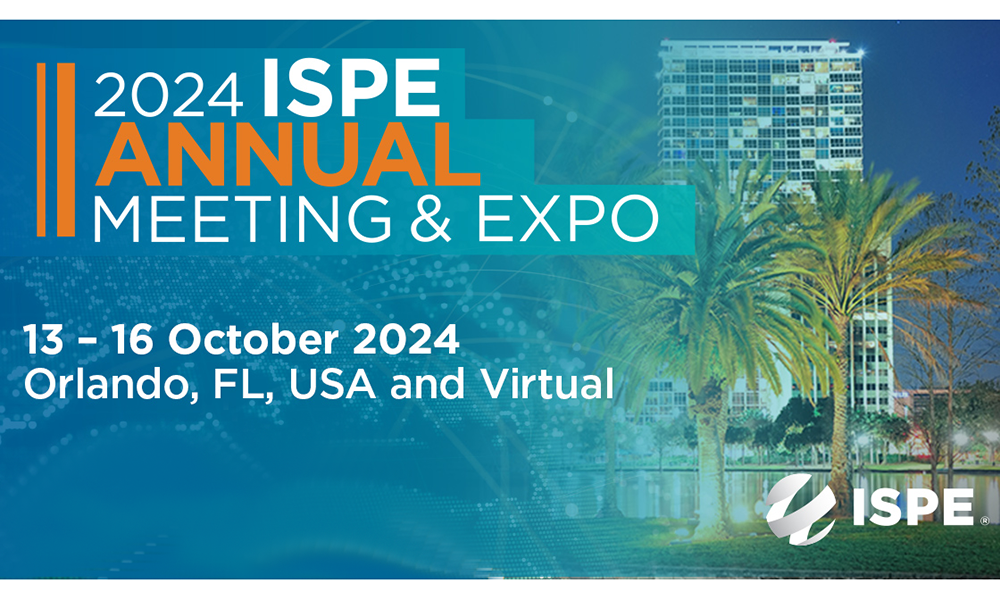European Medicines Agency Approach to Facilitating Innovative Manufacturing Approaches

At the 2022 ISPE Europe Annual Meeting held in Madrid on 25-27 April 2022, Evdokia Korakianiti, Head of Quality and Safety, European Medicines Agency (EMA), gave a keynote presentation of EMA’s approach to facilitating innovative manufacturing in the European Union (EU). The presentation discussed:
- EU Vision on innovation and key drivers
- Examples of what the Innovation Task Force has seen
- EU Regulatory landscape
- International collaboration, particularly convergence through the International Coalition of Medicines Regulatory Authorities (ICMRA)
Innovation is a key strategic priority for the EU Regulatory Network as detailed in the European Medicines Agencies Network Strategy to 2025 published in July 2020. The main themes identified are:
- Accessibility and availability of medicines
- Data analytics, digital tools, and digital transformation
- Innovation
- Antimicrobial resistance
- Supply chain challenges
- Sustainability of the Network and operational excellence
Each theme has a high-level goal with some identified, more specific objectives. For the two themes relevant to this presentation Korakianiti discussed some of the goals and objectives. These are presented in the following tables. Goals and objectives with most relevance to the presentation are shown in blue font.
Innovation
| Goal | Objectives |
|---|---|
| #1 Catalyse the integration of science and technology in medicines development and ensure sufficient network competences |
|
|
|
| #3 Enable and leverage research and innovation in regulatory science |
|
| #4 Enhance collaboration with medical device experts, notified bodies and academic groups |
|
|
Supply chain challenges
| Goal |
|---|
| #1 Enhance traceability, oversight, and security in the human/veterinary medicine supply chain from manufacturing to importation and final use of active pharmaceutical ingredients (APIs) and excipients. |
| #2 Enhance inspector capacity building at EU and international level to address the problem of APIs, new technologies and continuous manufacturing. |
| #3 Reinforce the responsibility for product quality by harmonising and reinforcing guidance to facilitate a coherent approach to the standards by regulators and industries for medicinal products for human and veterinary use. |
| #4 Encourage supply chain resilience and review long-term risks resulting from dependency on limited number of manufacturers and sites, to ensure continuity of supply and availability of medicinal products |
| #5 Analyse the possible implications of new manufacturing technologies and adapt the regulatory framework to accommodate innovation in manufacturing and distribution of medicinal products for human and veterinary use. |
Korakianiti continued, highlighting innovation trends identified by EMA in the period, 2022 to 2030 as gene therapy and genome editing (i.e. in vivo gene editing), microbiome products, digital health, vaccines using novel technologies (mRNA, viral vectors, nano-delivery systems), nanomaterials for targeted/modified release formulations, novel manufacturing approaches i.e. small, portable manufacturing sites, decentralised manufacturing, 3D printing, end-to-end continuous manufacturing, automation/artificial intelligence/big data approaches (Pharma 4.0) and individualised therapies (i.e. platform approaches for oligonucleotides, gene editing, gene therapy) for rare and ultrarare diseases (1 – 100 patients)
The vision is for an open and internationally connected regulatory environment facilitating the adoption of innovative approaches with the EU seen as an attractive competitive environment to host sites using advanced manufacturing technologies for EU and global supply. The EU should be a leader in regulatory innovation in manufacturing, ensuring predictability, consistency and high-quality expertise in advice given, from proof of concept at technology and/or investigational medicinal product level through to eventual medicinal product including major related changes predicted in the lifecycle.
The COVID-19 pandemic demonstrated the need for agility and flexibility in the manufacturing sector. At the EU level, there is a desire for increased supply resilience with a strategic increase in autonomy in manufacturing medicines.
Leveraging digital technologies as described in ISPE’s Pharma 4.0TM Program should support the pharmaceutical manufacturing sector to move from traditional (“fixed” and reactive) to intelligent (predictive and adaptive) forms of manufacturing, leading to better assurance of quality.
Additionally, there could be movement from central site using “fixed” processes to use of decentralised manufacturing in modular, mobile units. This concept could be applied to personalised medicines allowing manufacture close to the point of care e.g., in a hospital location.
Korakianiti introduced the EMA’s Innovation Task Force. In 2021, 30% of requests were related to innovative methods (statistics, software, biomarkers) and 15% to new technologies (3D printing). Some examples were summarised:
- Flexible manufacturing modular facility using several platforms manufacturing different drug substances in the same building
- Environmental monitoring using biofluorescence technology for monitoring of airborne particles in a Grade A environment
- Advanced continuous manufacturing of recombinant proteins, relevant process analytical technology aspects
- Gloveless robotic filling isolator technology
- 3D bioprinting applied to cell therapy for certain degenerative pathologies based on use of artificial intelligence
- Mass spectrometry and Raman spectrometry applied for multi-attribute analysis for release and stability testing for biologic products
- In silico methods for vaccine manufacturing
Korakianiti explained that there are NOT barriers in EU legislation to prevent advanced manufacturing, however, some clarifications and guidance may be needed such as:
Decentralised manufacturing
- Considerations for more flexibility for Manufacturing and Importation Authorisations for remote sites, better definition of responsibilities and duties of the Qualified Person (QP) and Marketing Authorization Holder (MAH) in relation to supervision of remote sites
Personalised medicines
- Clarify adaptions permitted for such products, traceability, data privacy, pharmacovigilance
- Manufacturing process adaptions support and justifications
- GMP adaption to personalised medicines
- Batch definition and batch release
Pharma 4.0™
- Alignment of expectations and definitions with other parts of the legal framework dealing with digitalisation
- Update of GMP chapters and annexes
Continuous manufacturing
- Adaptions/clarifications of batch concepts
In all cases
- Revisit the variation classification guideline (e.g., allow real time changes)
- Update of assessor/inspector practices
Korakianiti recognised that the regulatory environment is complicated with multiple voices and lack of a single engagement pathway from proof of concept to approval and through the lifecycle. Manufacturing innovation has the potential to impact many products with the value proposition not necessarily being derived from a single product. This regional disconnect does not facilitate global development.
To address this regional regulatory disconnect, Korakianiti referenced the Quality Innovation Group (QIG) as an innovation enabler. This group of assessors and inspectors has links to ICH, ICMRA, PIC/S, FDA and PMDA as well as academics and the European Medicines Regulatory network. This group is scheduled to be established in 2022 with operationalisation occurring in 2023. The group plans to provide:
- Engagement from proof of concept
- Focus on technologies with maturity potential
- Develop knowledge by involving academic and other experts
- Continued stewardship
- Regular touchpoints with international regulatory partners
Korakianiti also mentioned another major international convergence effort sponsored by ICMRA. ICMRA’s vision is to advance international regulatory effort through strategic partnership among regulatory agencies and industry to facilitate faster access and continuous supply of high-quality medicines to patients across regions considering the development, manufacture and supply of medicines is global. A recent ICMRA virtual workshop in July 2021 highlighted the need for more convergence on CMC aspects between regions to allow faster supply of critical medicines to patients and the need to overcome travel logistical challenges through use of hybrid inspections.
ICMRA is commencing two pilot programs focusing on:
- collaborative assessment with initial focus on chemistry, manufacturing, and control (CMC) post-approval changes and
- collaborative hybrid inspections.
The overall aim of these pilots is to improve manufacturing capacity for production of critical medicines and facilitate collaborative assessments and inspections by multiple regulatory authorities.
The specific aim of the collaborative assessment pilot is:
- Develop a framework which provides a platform for multiple regulatory agencies to participate in a collaborative assessment of post-approval CMC changes including post-approval change management plans (PACMPs)
- The intention is to develop a single list of questions to the applicant where possible with a stated goal of the pilot to identify misalignments, differences, and potential areas for further convergence of harmonisation across the regions
- Develop best practices in the quality assessment of post-approval changes
- Identify conditions (products/cases) where cross-regional efforts should focus and make recommendations to ICMRA for future cross-regional CMC collaboration, which may lead to proposals to ICH for standards and guidance development
The specific aim of the hybrid inspection pilot is:
- Use a combination of on-site inspections in the facility and distant inspectors (through a virtual platform) to conduct hybrid inspections
- Overcome travel restrictions
- Facility inclusion in the pilot will be based on mutual interest of regulators, voluntary participation by the manufacturer and the facility having the technology to support distant inspections
- Evaluation of the inspection outcome and any enforcement action, if needed, should remain a matter for each participating agency
- The pilot is voluntary for regulators and industry
Korakianiti concluded that one size does not fit all situations. There is a need to understand then develop guidance. She stressed that the EU is committed to create a regulatory environment that fosters advanced manufacturing applications with the QIG a key enabler. International collaboration is key with significant efforts being being made at ICH and ICMRA levels. Introduction of advanced manufacturing is technically possible, legally possible and EMA is working to make it happen.
ISPE will hold an Expert Xchange: Regulatory Summit on Modernizing Inspections on 14 September 2022, 1000 EDT. At this Summit, participants will have the opportunity to hear more about ICMRA, PIC/S, and World Health Organization (WHO) activities, as well as an industry perspective on regulatory collaboration initiatives. There will be an opportunity to hear views from multiple regulatory agencies as well as pose questions.
Disclaimer
This is an informal synopsis of presentation made at the 2022 ISPE Europe Annual Conference in Madrid, Spain on 25-27 April 2022. It has not been vetted by any of the agencies or regulators cited in this article.




